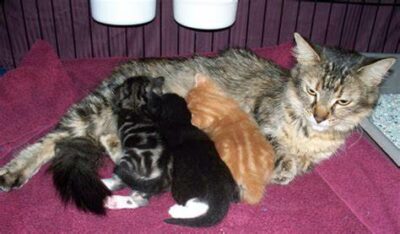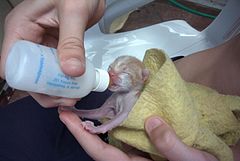Do you understand what is meant by fostering? Unlike adoption, it is a temporary arrangement. Your agreement entails your providing shelter and care for a homeless animal until it becomes ready for adoption. It can also refer to a predetermined amount of time with you until the animal can move to a shelter, preferably non-kill. So, do you know how to foster kittens and adult cats?

You will save a life as well as freeing up space in your local shelter. You can find this experience very rewarding, as you can offer better socialization than the animal would get in a shelter. Thus, the cat becomes better prepared for adoption.
Factors To Consider Before You Begin
- How appropriate is your space for fostering? Have you a space for them that you can clean easily? Do other members of the household accept the fostering idea? Can you keep the animal quarantined from other animals in the house, until the newcomer adjusts and receives a clean bill of health?
- Will your schedule allow time for fostering? Adult cats may present less of a problem, but often a very young kitten may need feeding every two to three hours. Will you have time for such a feeding schedule? What about taking kittens to work with you, so you can take care of all their needs?
- What about necessary information from a vet, or tools that you will need? It’s important to have a vet in case a medical issue arises. Will your local shelter be available for support and to answer questions? If need be, do you have funds necessary for food and medical expenses, if the shelter cannot help you out?
How To Begin
1) You can investigate the fostering options available at your local shelter. Often they will have need for willing foster volunteers.
2) Perhaps there is a local rescue group that could use your help. You may need to fill out an application and to have a home inspection. Then they will help select the best candidate for you to take home.

3) Perhaps you have found a cat or kitten that you believe is a stray in need of a home. First, make sure you have an orphan kitten or homeless cat. Check with the vet for a microchip and call to check with local shelters to see if such a cat has been reported missing.
Getting Acquainted With Your Foster
Always display caution when approaching a foster cat, especially at first, when they just met you. In the beginning, confine the cat in a bathroom or spare bedroom…somewhere where you can shut the door.
The foster needs to remain separated from other pets in the family until your vet verifies the cat’s good health. Make sure you keep newcomers separated until they become comfortable in this new space.
Once you know all your animals will get along, you can allow the foster cat or kittens the run of the house.
Provide a comfortable bed, a bowl of fresh water, and a clean litter box. Note: If fostering kittens, use non-clumping litter, because they will ingest some litter in the process of cleaning themselves, and clumping litter can cause serious problems to a kitten’s digestive system.
If you are fostering an adult cat, try a variety of wet and dry foods to find one kitty likes. If the cat insists on being fussy, encourage him with treats or canned salmon or tuna. You can also use human baby food, as long as onion and garlic don’t appear on the ingredient list.
Include a scratching post and perhaps a few toys in the foster cat’s room. Make sure the cat has his own food dish.
Fostering A Nursing Mother With Kittens
It will help your kittens to learn and mature if they can remain with their mother for the first few weeks. In such a case, when you foster both mother and babies, keep these things in mind:

Provide a box big enough to hold the entire family. Sides should be high enough so the kittens won’t fall out, but low enough so Mama Cat can get out if she needs to do so.
Line the box with several layers of bedding. In this way, you can take off a soiled layer when you need to wash it.
Give Mama Cat a nutrient-rich diet, such as kitten food. Offer her food several times a day, and perhaps keep dry food available at all times.
To contain the kittens in their room when they start to explore, use a baby gate. Then the mother cat can jump the gate if she needs to leave for a short time.
Kittens need to start on moist kitten food at about four weeks of age. To encourage them to try this new food, offer a little on your finger.
Overall Condition Of A New Foster Kitten
What if you bring home a kitten without a mother? When you bring a new kitten into your home, you must understand the baby cat’s overall condition. If the kitten is sick or injured, visit the vet immediately. The kitten will need emergency care if she:
- Gasps for air or cannot breathe
- Suffers from some painful infection, either to eyes or skin
- Bleeds from any orifice
- Is limp or lethargic
Once the kitten becomes stabilized, follow these steps:
1) Feed that baby
If the kitten is 0 to 4 weeks old, you must feed the baby with a bottle. Do not give cow’s milk to a baby kitten, as this can be dangerous. You can choose from a variety of kitten milk formulas.

2) Kittens younger than three weeks will heed help with urinating and defecating. After every feeding, dampen a slightly rough terrycloth washcloth with warm water to stimulate the anus and urinary openings.
When the kitten is older than three weeks old, upon coming home, immediately place the kitten in the litter box, so Baby can learn its location. Don’t forget — non-clumping litter. Use a shallow box with just a small amount of litter.
3) Show your new baby the cozy, warm bed. Make sure to use a heating pad, set on low and covered, plus an unheated resting spot beside it in case the kitten gets too hot.
Keep These Things In Mind If You Are Fostering Cats
1) The cat needs its personal space
This one is especially true with a brand-new cat. This new environment can be potentially confusing and scary. Make sure that, especially at first, they have their own safe space. Doing so will help their adjustment over time.
2) Keep kitty quarantined until you receive an “all clear” on kitty’s health.
You don’t want to provoke unwanted health issues with your other pets.
3) Schedule a vet visit.
In order to ensure the cat brings no health problems into your home with him, make sure to schedule a vet visit to check for fleas, ticks, or infectious diseases.
Perhaps kitty has not received all the necessary vaccinations at the shelter. Then it becomes important that he gets these lacks taken care of right away.
4) Gather all your basic supplies ahead of time.
It will make things easier for you if you have kitty’s space already prepared. Also, remember that you may have to utilize trial and error to find out what food the cat likes, or what kind to use.
5) Keep your home safe for kitty.

Remember that cats are very curious animals, and once they become comfortable and start exploring, make sure your home holds no potential dangers.
Cords, cables, and blind cords need to be hidden and secured. Check that no poisonous plants or flowers are in kitty’s reach to tempt and perhaps bring sickness. Anything chemical, such as cleaning supplies, toiletries, and medications should be well secured. Keep the toilet lid and the windows closed.
6) Take your fostering commitment seriously.
Your foster kitty will be totally dependent on you, either for a short period of time or perhaps for months, and you must prepare for this time period, by giving your foster all the care he needs.
Someone said, “If only cats grew into kittens.” Well, fostering gives you a way to make that wish come true. You can have a continuous flow of new kittens if you wish.
Your fostering experience can be incredibly rewarding, and you can feel proud to have helped your foster cats to thrive and to become great additions to their forever homes, when they graduate from your fine foster care.
References I used for this post: saveacat.org/fostering-kittens.html litter-robot.com/blog/how-to-foster-kittens-and-cats/ kittenlady.org/fostering allaboutcats.com/fostering-cats

